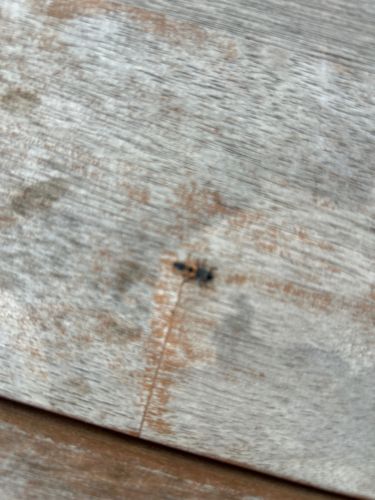Velvet Ant (likely a female Mutillid wasp due to the wingless, ant-like appearance and fuzzy body)
Scientific Name: Mutillidae (family level, specific genus/species is difficult to determine from the image)
Order & Family: Order: Hymenoptera, Family: Mutillidae
Size: Typically range from 0.2 to 1 inch (5-25 mm) in length, though some can be larger.

Natural Habitat
They are found in sandy areas, open fields, meadows, and along the edges of forests, especially in dry, arid regions. They are common in the southern and western United States.
Diet & Feeding
Adult velvet ants feed on nectar. Larvae are ectoparasitoids, feeding on the larvae and pupae of other ground-nestnesting insects, primarily bees and wasps.
Behavior Patterns
Velvet ants are solitary wasps. Females are wingless and often resemble large, hairy ants, while males are winged. They are active during the day and are known for their extremely painful sting, leading to their common name "cow killers" though their sting is not fatal to cows. Females burrow into the ground or decaying wood to lay eggs on host larvae (typically ground-nesting bees or wasps).
Risks & Benefits
Risk: Their sting is one of the most painful insect stings, though not medically significant for most people (does not typically cause lasting damage or require medical attention unless there's an allergic reaction). Benefits: As parasitoids, velvet ants help control populations of other insects, including some considered pests, contributing to ecosystem balance.
Identified on: 8/31/2025